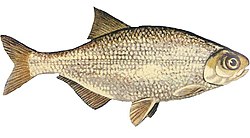| Paramormyrops | |
|---|---|
 | |
| Paramormyrops kingsleyae | |
| Scientific classification | |
| Kingdom: | Animalia |
| Phylum: | Chordata |
| Class: | Actinopterygii |
| Order: | Osteoglossiformes |
| Family: | Mormyridae |
| Genus: | Paramormyrops Taverne, Thys van den Audenaerde & Heymer, 1977 |
| Type species | |
| Paramormyrops gabonensis Taverne, Thys van den Audenaerde & Heymer, 1977 | |
Paramormyrops is a genus of elephantfish in the family Mormyridae from Africa.


